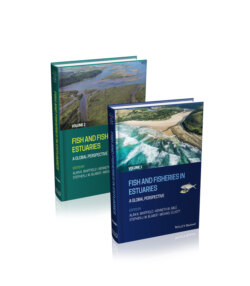Читать книгу Fish and Fisheries in Estuaries - Группа авторов - Страница 44
3.2.2.3 Foods of early‐life stages
ОглавлениеFood availability for first‐feeding larvae historically has been recognised as critical for growth and survival of marine fish larvae (Hjort 1914, Cushing 1990, Whitfield et al. 2022b). Here we describe foods of larvae, deferring discussion of the feeding process and nutrition to Section 3.3.3.1. As in most marine fish larvae, foods of estuarine‐associated larvae are dominated by zooplankton, mainly copepods (Houde & Alpern‐Lovdal 1984, Llopiz 2013, Strydom et al. 2014b, Bornman et al. 2019) but may shift to include benthic invertebrates or larger pelagic prey as larvae grow and transition to the juvenile stage (e.g. Houde & Alpern‐Lovdal 1984, Islam et al. 2006, Campfield & Houde 2011, Arula et al. 2012a, Bils et al. 2017). Those species that are detritivorous as juveniles and adults also have larvae that are zooplanktivorous, often showing a gradual shift in diet from zooplankton, through small vertically migrating invertebrates, for example mysids, to small benthic organisms during the very early‐juvenile stages (Blaber & Whitfield 1977, Elliott et al. 2002). The feeding behaviour, including consumption levels, of larvae undergoing metamorphosis and ingress into estuaries may change during this transition (Deary et al. 2017). For example, in the paralichthyid Paralichthys dentatus, the evidence of feeding was reduced during eye migration (Grover 1998).
A review of young‐of‐the‐year fish diets for 47 estuarine species in the northeastern USA indicated seven categories of invertebrates were important prey (copepods, amphipods, mysids, decapod shrimp, polychaetes, crabs and insects/arachnids) (Able & Fahay 2010). Copepods were important prey for 33 species, amphipods for 27 species, mysids for 26 species, decapod shrimp for 21 species, polychaetes for 17 species, decapod crabs for 13 species and insects/arachnids for 11 species. Other prey categories frequently eaten were isopods, bivalves, gastropods, ostracods, invertebrate eggs, nematodes, cnidarians, algae and cladocerans. The occurrence of insects and arachnids in diets of juvenile estuarine fishes points to the potential importance of allochthonous foods for some species. The importance of microplankton and protists in larval fish diets, including estuarine fish larvae, has become clearer with the advent of improved diagnostic methods (e.g. Zingel et al. 2019).
The importance of copepods in feeding by estuarine fish larvae is illustrated for the clupeid Clupea harengus in the Baltic Sea where the copepod Eurytemora affinis dominated the diet of larvae, with an annual occurrence of 58–92% (Arula et al. 2012a). The significance of copepods in the diet of larval C. harengus also is reported in other studies, although the copepod species eaten differed amongst regions. For example, E. affinis dominated in the Baltic Sea (Schnack 1974); Acartia spp. in the Blackwater Estuary, England (Fox et al. 1999); Pseudocalanus sp., Acartia sp., Temora sp., Oithona similis and Centropages sp. in the North Sea (Fossum & Johannessen 1979, Checkley 1982); and Calanus finmarchicus in the North Atlantic (Fiksen et al. 2002). In South African estuaries, larvae of the estuarine‐dependent clupeid Gilchristella aestuaria fed extensively on eggs of the dominant copepod P. hessi (Whitfield & Harrison 1996) and larvae of five species in families Clupeidae, Haemulidae, Monodactylidae, Mugilidae and Sparidae fed predominantly on copepods (Whitfield 1985). Rotifers can also be an important prey item for first‐feeding larvae of C. harengus in the Baltic Sea (Margonski et al. 2006). In the Baltic clupeid Sprattus sprattus, the copepod Acartia sp. is important in the larval diet (Voss et al. 2003, Dickmann et al. 2007) and seasonal comparison of prey fields suggested that cladocerans become increasingly important during the summer months.
